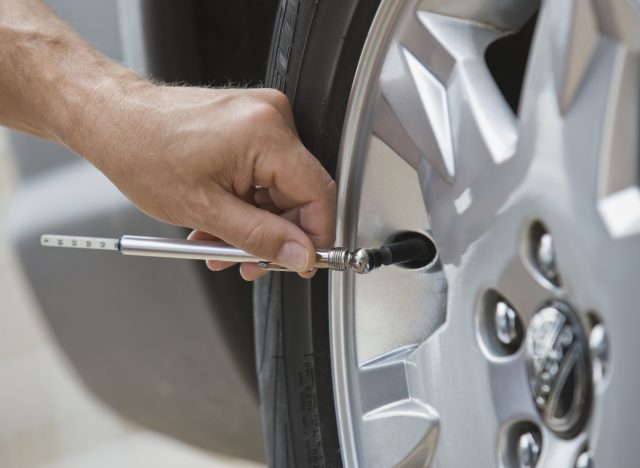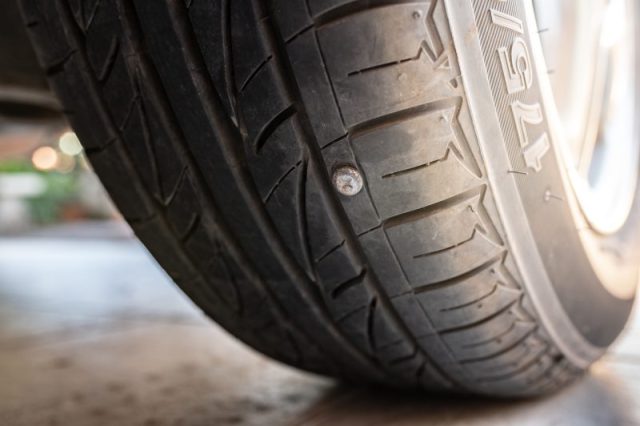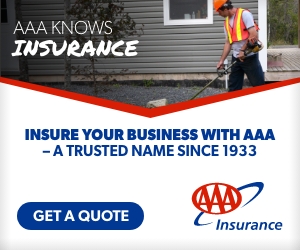Few events disrupt a road trip – or the average day – as much as a blown tire. And while you can’t always avoid running over a nail, there are ways to keep your tires in optimum condition and ensure you arrive at your destination safely.
Knowing when to replace tires is not something all drivers are aware of, but old or worn tires can be dangerous. In 2021 alone, there were 622 fatalities from tire-related motor vehicle crashes in the U.S., according to the most recent data from the National Highway Traffic Safety Administration.
One way to ensure uninterrupted travel and your safety is to examine tires thoroughly and maintain them regularly.
Signs of Tire Damage
In the Northeast, tires usually have a lifespan of about five years.
The pressure monitor system light on your dashboard is a sure sign to take your car to a professional to check for punctures or other issues, but some warnings are not as obvious.
Here are a few more signs that your tires may need repair or replacement.
- Worn tire tread – The tire appears smooth or has very few ridges. Improper alignment, overinflation, underinflation or a damaged suspension can also cause uneven wear, affecting tread in one area more than another. Uneven tire wear or cupping can also take a toll on the steering mechanism.
- Slipping and stopping – Wheel spin when the car accelerates or skids when braking are “obvious signs that a tire’s tread has exceeded its useful life,” said Joseph Klis, co-founder of AAA Approved Auto Repair facility Klis Brothers at North Shore Firestone in East Northport, N.Y.
- Sidewall cracks, bubbles/bulges and breaks – These can be caused if a tire scrapes against a curb or a foreign object.
- Dry rot – This occurs when the tire loses moisture, and the rubber becomes dry and brittle. This is due to UV exposure, hash chemicals, high temperatures and age.
Find a AAA Approved Auto Shop near you.
Tread Lightly
Many drivers wonder at what tread depth to replace tires. Tires are measured in 32nds of an inch with new tires having about 11/32nds. Although tires are considered worn out at 2/32nds, AAA recommends replacement at 4/32nds of tread life.
Watch the the video above to learn how to easily measure your tread depth with a quarter.
“The reason is stopping distance in wet weather,” according to John Paul, senior manager of traffic safety for AAA Northeast. “A tire with 4/32nds of tread stops from 60 mph in up to 60 feet shorter distance, the length of a tractor trailer, than a tire with 2/32nds.”
Key Tire Maintenance
Knowing how often to change your tires depends on how well you care for them.
Some of the biggest tire care mistakes are not regularly rotating tires, skipping routine alignments and incorrect tire pressure. In addition to regularly checking your tread, you should also be keeping up on these maintenance tasks.
Tire Pressure
Drivers should inspect tires once a month to ensure they are properly inflated to the recommended pounds per square inch. You can find this information on the driver’s door placard. Always check tire pressure with a gauge when the tires are cool.
You should also keep a closer eye on your tires in cold weather and check them at least twice a month. When the temperature decreases by 10 degrees, a car’s tires can lose between 1½ and 1 pound of air pressure.
Fully inflated tires improve gas mileage, make driving safer and help tires last longer.
Tire Rotation
The main purpose of rotating tires is to ensure that the best tire treads are on the front of the car. It ensures proper handling, performance and tire wear. It is critical for the vehicle owner’s safety. Refer to the vehicle’s owner’s manual for mileage recommendations. Typically tire rotation is performed between 5,000 and 7,000 miles but it can vary based on the vehicle and types of tires.
Tire Alignment
Wheel or tire alignment is critical to a car’s suspension and helps to maintain tires. Alignment refers to angling the tires onto the car to maximize contact with the road. When the wheels are not in alignment, they wear unevenly, and the car can pull to one side. The alignment should be checked generally every year or 12,000 miles or at the first signs of tire wear or uneven handling.
“Alignments can only be set on a balanced tire,” notes Klis. “A tire with uneven wear will continue to wear on that poor pattern even with an alignment and would not be well-spent money.”

When to Repair and When to Replace Tires
Even if a tire isn’t flat, any damage is reason to consult a tire care expert for a more thorough inspection.
“Tires should only be repaired within the tread area, never on the outside edge or sidewall,” according to Paul. “Punctures larger than one-quarter inch should not be repaired but the tire should be replaced instead.”
Rather than just plugging a hole, a mechanic should remove the tire from the rim, inspect it for damage and then repair it with a combination of a plug and a patch.
“Generally, once the tire is repaired properly it is safe for use,” Paul said. “At the same time the tire should be rebalanced, and the tire pressure monitoring system-wheel sensor should be inspected.”
Not all tires can be repaired, Paul added. “Specific repair limits should be based on recommendations or repair policy of the tire manufacturer and/or type of tire service,” Paul explained. “And never repair a tire that has an existing, improper repair. The tire must be replaced.”
You may be wondering if AAA replaces tires during roadside assistance calls. AAA can install your spare tire if you have one. A technician can also inflate your tire if needed. If your tire needs more extensive repair or replacement, AAA will tow your vehicle to the nearest approved repair facility.
Don’t Forget Your Spare
If your vehicle is equipped with a spare tire, don’t forget to have the air pressure checked regularly. If your spare is mounted under the car, it is also a good idea to periodically service the mechanism that lowers and secures the tire. Learn more about how to care for your spare.
How do you care for your tires? Tell us in the comments.
6 Thoughts on “When to Replace Tires: Don’t Ignore These Signs”
Leave A Comment
Comments are subject to moderation and may or may not be published at the editor’s discretion. Only comments that are relevant to the article and add value to the Your AAA community will be considered. Comments may be edited for clarity and length.

















Is it true that all four tires must be replaced if one of them gets an unrepairable puncture? Does this depend on the degree of wear on the other tires?
It depends. Om an all wheel drive, the diameter of all tires need to be within a certain percentage of the others. If needed, put the somewhat larger one on the rear. One can also have the new tire shaved down to match the others. Also, tire make,model and tread pattern must be the same
You failed to mention that tires need to replaced after 8 to 10 years no matter how good they look. Drivers need to know how to read the date codes on their tires so they know how old they are.
How do you read the date code on your car’s tires?
On the sidewall of each tire is a 4-digit code that is stamped in. For example, 4419. The first two digits represent the week of the year and the last two digits represent the year. So, in this example, the 44th week is sometime in October and the year is 2019.
I learned the hard way about checking my tire pressure. When I went for my 6 month tire rotation, the Subaru dealer told me that the valve stems had to be replaced as the caps had seized. A few months earlier I replaced the plastic caps with metal ones I took from my wife’s Lexus that was being traded in. I either should have stayed with the plastic caps or should have periodically checked my tire pressure with a gauge instead of relying on the dashboard display.